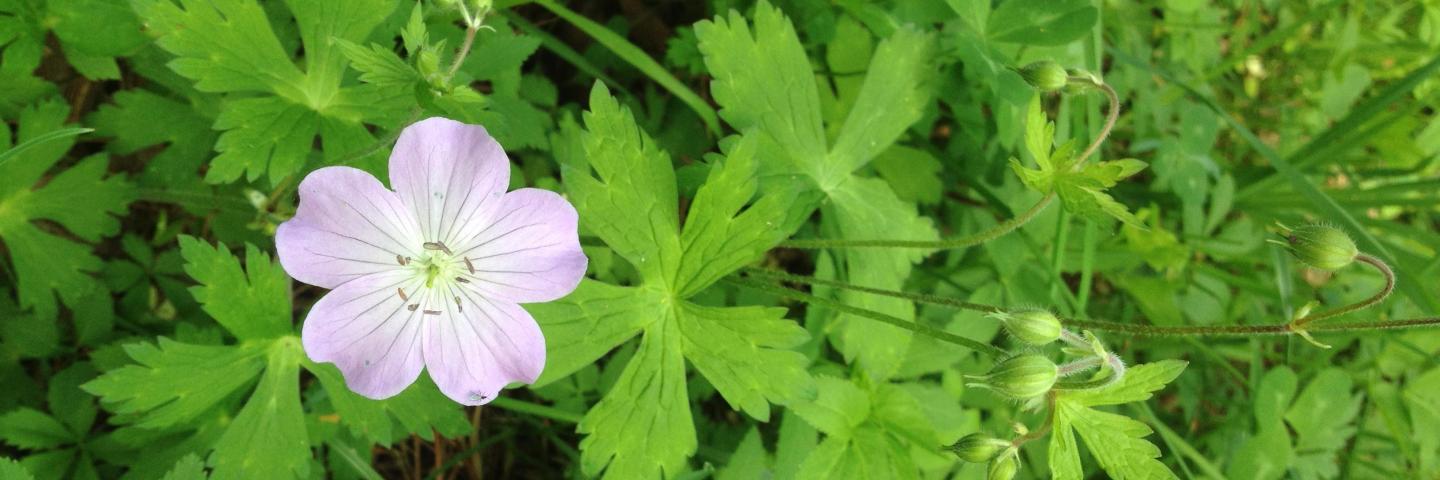In 2024 River Walk and its riverside neighbors experienced an unprecedented impact from beavers. We’ve seen beaver damage on vegetation before, but never on this scale. Many trail visitors expressed surprise and dismay as beavers took trees and saplings from the riverbank, crossed the trail to cut down a red maple in its full autumnal glory, and then went on to consume the fresh saplings used to rebuild the wattle fence around the Bridge Street oak tree.
Many of us responded with "How can we stop them?" but given time to think, we are reigning in our territorial feelings to consider the importance of beavers to our native habitats. Large trees downed by beavers respond by becoming multi-stemmed and their roots continue to support the bank and prevent erosion. So we are learning to be good neighbors with our wetland rodents. At the same time, we can implement measures to protect select trees. On your next visit to River Walk you will notice the use of wire fencing surrounding some of our significant tree species, such as the historic oak on Bridge Street. This spring we will be planting a new tree to replace the red maple along the downstream River Walk allée as a part of our celebration of trees on Arbor Day.
Just like us, beavers are striving to survive in a changing climate. Please read this blog post from Luka, our River Walk Intern who was delighted to experience and learn about river beavers:
“Hi! My name is Luka and I have been working for Greenagers for a while now. Since I started working on Riverwalk, one of my responsibilities was to keep the walk clean, which includes clearing off trees that have fallen after beavers “ate” them down. It was my first time in my life seeing a sign of beavers, since where I am from we don't have much of them. I wasn’t even little mad at them. I was so excited that I saw something new, so I have decided to write a little blog about those fascinating creatures!”
Did you know?
- Beavers are known for their remarkable ability to modify their environment. They belong to the family of Castorimorpha and are primarily found in North America and Europe. Beavers are the second-largest rodents in the world after the Capybara, and they play a crucial role in their ecosystems.
- Adult beavers typically weigh between 35 to 65 pounds (15 to 30 kg) and can be about 3 to 4 feet (0.9 to 1.2 meters) long, including their tail. Their flat, paddle-shaped tail can be about 10 to 12 inches (25 to 30 cm) long and is used for balance, communication, and as a rudder while swimming. Beavers have dense, waterproof fur that keeps them warm in cold water conditions.
- Beavers prefer habitats near rivers, streams, ponds, and wetlands where they can build their dams and lodges. Their famous dams are made from branches, mud, and stones, which create ponds that provide safety from predators and a habitat for various wildlife.
- Beavers are known as "nature's engineers" due to their dam-building skills. They gnaw on wood to gather materials for their constructions. Their diet consists mainly of tree bark, leaves, aquatic plants, and grasses. They are herbivores and play an essential role in the ecosystem by promoting plant growth and maintaining water levels.
- Pond beavers and river beavers differ primarily in their habitats and adaptations. Pond beavers create larger dams to form extensive ponds which provide stable environments with abundant food sources like aquatic plants.
- In contrast, river beavers build smaller, simpler dams in flowing water, focusing on creating pools that offer shelter from currents and predators. These differences influence their foraging behaviors and the types of vegetation they utilize, reflecting their adaptations to still versus moving water environments.
- By building dams, beavers create wetlands that support a diverse range of plants and animals, including fish, amphibians, and birds. Their dams help regulate water flow, reduce erosion, and improve water quality.
- Beavers communicate through a variety of vocalizations, tail slaps, and scent marking. They are social animals that typically live in family units consisting of a monogamous pair and their offspring.
- Beavers were once hunted extensively for their fur and were nearly extinct in some regions. However, conservation efforts and legal protections have helped their populations recover. Today, beavers are generally considered a species of Least Concern and they are vital for maintaining healthy ecosystems.
- Beavers are incredible animals that significantly impact their environments. By understanding their behaviors and contributions to ecosystems, we can appreciate the importance of conserving these remarkable creatures and their habitats."
Other Resources:
Eager: The Surprising, Secret Life of Beavers and Why They Matter by Ben Goldfarb
Recently in England two pairs of Eurasian beavers were released into the wild centuries after their extinction. Hunted to extinction in the 16th century on mainland Britain for their fur, meat, and scent glands, beavers are now set to play a crucial role in ecosystem restoration. Read more here: https://beavertrust.org/historic-first-official-wild-beaver-release-in-england/

